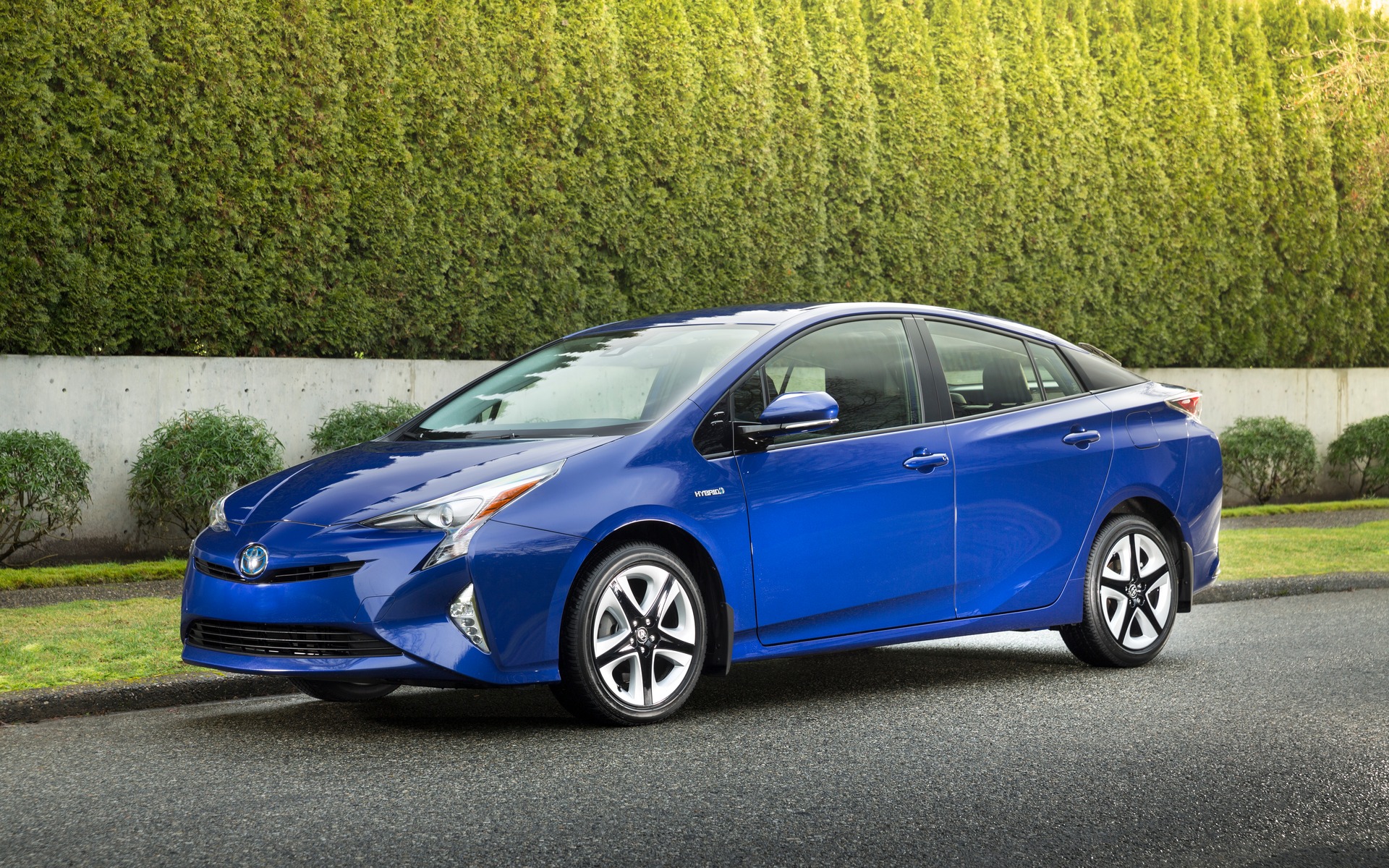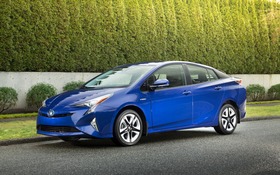2016 Toyota Prius: the Manufacturer’s Ethos

| Strong points |
|
|---|---|
| Weak points |
|
The Camry is the bestselling car in North America and the Corolla is the world’s top seller, but the Prius is Toyota’s ethos. It’s the most eloquent demonstration of the manufacturer’s technical know-how.
The Prius debuted in Japan in 1997 and then came to North America in 2000. Since then, more than five million units have been sold worldwide. Many new versions have been released over the years, to the point that the Prius line has become a brand in itself.
All-new architecture
For 2016, Toyota is releasing the fourth generation of its hybrid model. Built on a new platform called the Toyota New Global Architecture (TNGA), the new Prius is longer, wider and lower than its predecessor.
They also made it sleeker to enhance its aerodynamics and emphasize its stepped-up dynamism. The new generation has a double-wishbone rear suspension replacing the torsion beam found in the previous generations. It’s also worth noting that the vehicle’s centre of gravity has dropped by 24 millimetres.
As soon as you set out in the new Prius, you can tell that it’s more comfortable under sporty driving, even though that’s not its main purpose. When we put it through its paces on a closed-circuit slalom, we noticed that the handling was more precise. This exercise was tough for the 2015 Prius to get through, but the 2016 model proved itself with substantially improved handling. Overall, it’s more self-assured and stable, allowing for faster manoeuvres.
Where dynamism and handling are concerned, there’s no confusing the new Prius with the old one. That said, the Prius still isn’t as assertive or direct as the Volkswagen Golf or Mazda3, but it’s come a long way.
Less than 4.0 L/100 km in the real world
Driving the new Prius through the Greater Vancouver Area, we recorded a fuel consumption average of less than 4.0 L/100 km. And that’s without even trying. We just drove normally and kept pace with local city and highway so as not to annoy other drivers.
Toyota’s official figures for the 2016 Prius are 4.4 L (city) and 4.6 L (highway) for an average of 4.5 L/100 km. Based on what we saw, these numbers are totally credible.
121 horses that are more like 135
The 2016 Prius’ drivetrain produces 121 horsepower according the Society of Automotive Engineers (SAE) standards recently adopted in Japan. On paper, the Prius’ output drops from 135 to 121 hp. But rest assured that the reason behind this decrease is a change in the calculation method and the “reduction” in output remains purely theoretical.
In reality, the 2016 isn’t falling behind and its performance – acceleration and pick-up – are entirely comparable to the previous model. As for comfort, the soundproofing still leaves room for improvement, with road noises still too audible in the passenger compartment.
Bold look, massive appeal
According to the brand’s management, the top priority for the 2016 Prius is to broaden the scope of potential buyers. Essentially, they want the car to make significant gains in appealing to the general public, not just environmentalists or existing clients looking to replace their current Prius with a new one.
And yet, the Prius’ appearance is anything but mainstream. The front end features futuristic headlamps and sweeping lines for a look that will please some, but not all. But it’s not just about looks; its exterior has been honed for improved aerodynamics and the result is a super-low drag coefficient of 0.24.
Spacious and functional interior
Slip into the driver’s seat and you’ll enjoy excellent visibility. Finding the right driving position is easy too. The dashboard still has the same high-tech look, but its layout is good with easy-to-find controls and a new user-friendly colour touchscreen.
If there’s one unhappy detail, it’s the colour scheme. Some models come with a plastic centre console that stands out like a sore thumb – especially on the units with two-tone interiors. The mix of black, beige and white is hard on the eyes.
What about price? The base model starts at $25,995, or $26,585 if you add the Toyota Safety Sense package and heated front seats. With more equipment, the Touring costs $29,330, while the Technology retails for $28,730, or $31,990 with the Advanced Package that includes head-up display, rain-sensing wipers and park assist.
Nice progress
In conclusion, the fourth-generation Prius is better than the previous model in all regards – but it’s too bad that its only ambition is to be better than before. We would have liked to see it push the boundaries and set a new standard for hybrid drivetrains. It’s obvious that a fourth-gen plug-in hybrid will eventually be offered, as it was with the third generation. But in my humble opinion, Toyota should have made a bigger splash by offering plug-in technology for the 2016 Prius from day one. After all, when you’re a leader in hybrid technology, shouldn’t you always be making waves?
- In other news, it's the end for the Scion brand
- In other news, Toyota buys Daihatsu
- Fond a pre-owned Toyota Prius











